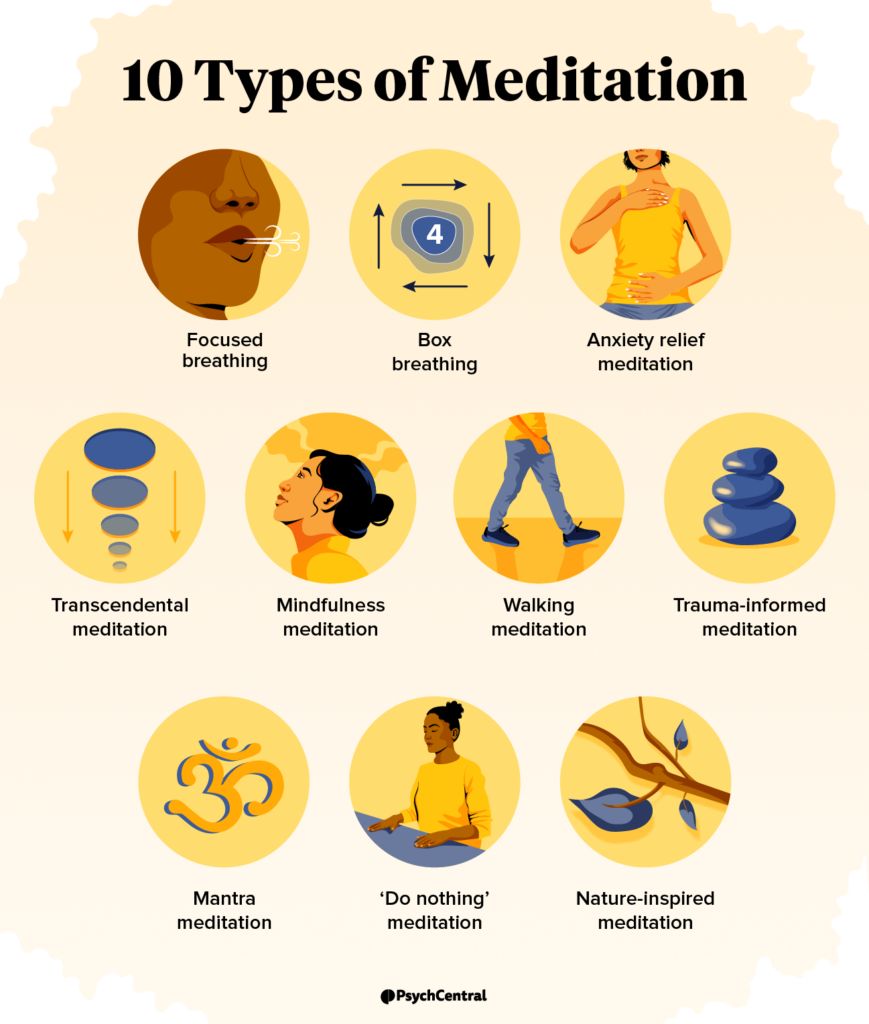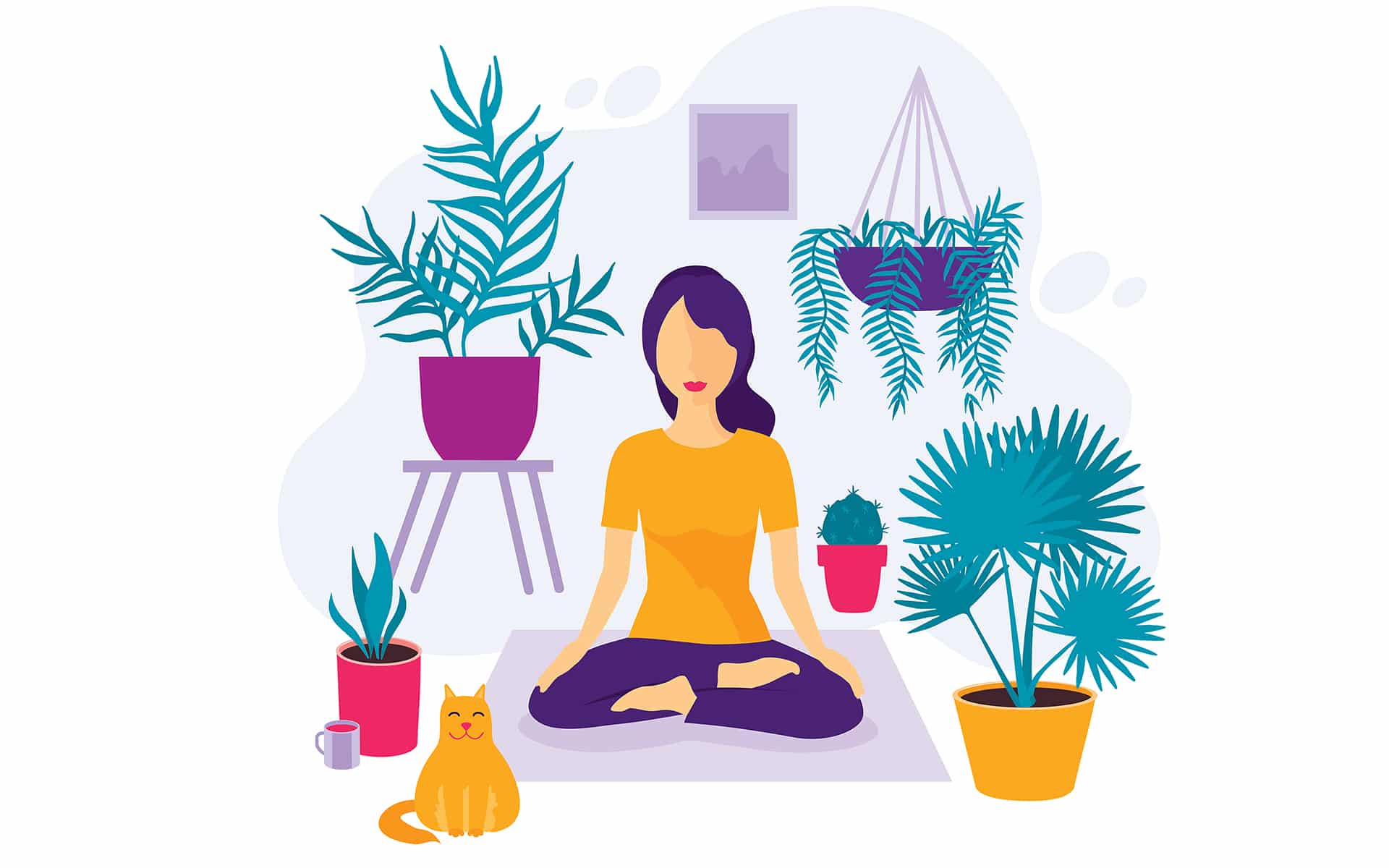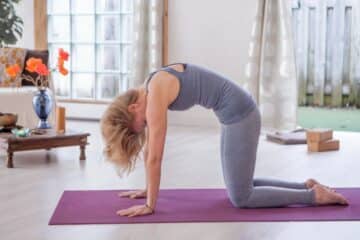Looking to relieve anxiety through yoga? Participating in guided meditation for anxiety relief can help manage feelings of stress and overwhelm.
This practice involves focusing on your breath, meditating on calming imagery, and engaging in gentle yoga poses to promote relaxation and alleviate anxiety symptoms. By incorporating meditation into your yoga routine, you can center your mind and find peace, allowing you to manage anxiety more effectively.
This article will explore the benefits of guided meditation for anxiety relief in yoga practice and provide tips for incorporating it into your daily wellness routine.
What Is Guided Meditation?
What is Guided Meditation?
Guided meditation is a practice where an experienced instructor or recorded audio provides spoken guidance to lead participants through a session. It is a form of meditation that is particularly beneficial for beginners or those experiencing high levels of stress or anxiety. The guided meditation for anxiety relief in yoga practice involves focusing the mind and creating a sense of inner calm through visualization and deep breathing techniques.
Benefits Of Guided Meditation
1. Reduces anxiety and stress levels.
2. Enhances mindfulness and self-awareness.
3. Improves emotional well-being and mental clarity.
How Guided Meditation Works
Guided meditation works by providing a structured framework for relaxation and mindful awareness. The instructor or recorded voice directs participants to focus on specific imagery or sensations, allowing them to let go of negative thoughts and feelings. This process promotes a tranquil state of mind and helps to alleviate anxiety through mindful breathing and intentional thought redirection.
Understanding Anxiety And Its Impact
Understanding the impact of anxiety is crucial, especially in the realm of yoga practice. Guided meditation provides relief by allowing individuals to find a sense of calm and inner peace amidst anxiety. Incorporating this practice into yoga can greatly enhance overall well-being.
Understanding Anxiety and Its Impact Anxiety is a natural response to stress signaling to our body that something is wrong and needs attention. However, when anxiety becomes persistent and overwhelming, it can have a detrimental impact on a person’s overall well-being. In the context of yoga practice, understanding anxiety and its impact is crucial for effectively incorporating guided meditation for anxiety relief. Let’s delve into the types of anxiety disorders and the effects of anxiety on physical and mental health. Types of Anxiety Disorders Anxiety disorders encompass a range of conditions, including generalized anxiety disorder (GAD), panic disorder, social anxiety disorder, and phobias. Each type exhibits unique symptoms and triggers, influencing the individual’s mental and emotional state. It’s essential to recognize the specific characteristics of each disorder to tailor guided meditation practices effectively. Effects of Anxiety on Physical and Mental Health The impact of anxiety extends beyond mental distress to physical health. Chronic anxiety can lead to insomnia, muscle tension, digestive issues, and weakened immune system. Furthermore, it contributes to heightened stress levels, potential depression, and reduced ability to focus. Understanding these effects underscores the importance of implementing anxiety-relief practices like guided meditation in yoga sessions. Incorporating these elements into a WordPress post can help in engaging and educating the audience about the relevance of guided meditation in alleviating anxiety within yoga practice.
The Role Of Yoga In Anxiety Relief
Anxiety is a common issue that affects many individuals in today’s fast-paced world. It can manifest in various forms, such as excessive worry, restlessness, and difficulty in focusing. While there are several techniques available to manage anxiety, one effective approach is the practice of yoga. Yoga combines physical postures, breath control, and meditation to create a holistic experience for the body and mind. In this article, we will explore the connection between yoga and meditation in anxiety relief and discuss the significant benefits of incorporating yoga into your wellness routine.
Connection Between Yoga And Meditation
Yoga and meditation are intertwined practices that complement each other in anxiety relief. Meditation is an integral part of yoga and involves focusing the mind to achieve a state of calm and relaxation. When combined with yoga postures, meditation creates a harmonious balance between the mind, body, and breath. The controlled breathing techniques in yoga help calm the nervous system, reducing feelings of anxiety and stress. By integrating meditation into your yoga practice, you enhance the ability to cultivate a sense of inner peace and mindfulness, promoting anxiety relief.
Benefits Of Yoga For Anxiety Relief
There are numerous benefits of incorporating yoga into your routine to alleviate anxiety. Here are some key advantages:
- Stress Reduction: Yoga helps activate the body’s relaxation response, reducing overall stress levels and promoting calmness.
- Improved Sleep Quality: Regular yoga practice enhances sleep quality, which is often disrupted by anxiety. A well-rested body and mind are better equipped to deal with anxiety.
- Enhanced Mindfulness: Yoga cultivates mindfulness by directing your attention to the present moment. This heightened awareness helps reduce anxious thoughts and focus on the here and now.
- Physical and Mental Strength: Yoga postures not only strengthen the body but also build mental resilience. This increased strength and resilience allow for better management of anxiety triggers.
By incorporating yoga into your lifestyle, you can establish a well-rounded approach to anxiety relief. Alongside other self-care practices, yoga offers a holistic path toward managing anxiety and cultivating a sense of inner peace.

Credit: psychcentral.com
Introduction To Guided Meditation For Anxiety Relief
Discover the power of guided meditation in yoga for relieving anxiety. Through gentle guidance, this practice helps in calming the mind, reducing stress, and promoting relaxation. By incorporating guided meditation into your yoga routine, you can find peace and tranquility amidst life’s challenges.
Anxiety is a common challenge that many people face in their daily lives. It can creep up on us during stressful situations or even when we least expect it. Guided meditation has proven to be an effective tool in helping individuals find relief from anxiety. By incorporating guided meditation into your yoga practice, you can experience a sense of calm and relaxation, allowing your mind and body to unwind. In this article, we will explore the technique of guided meditation for anxiety relief and discuss how you can prepare for this powerful practice.
Exploring The Technique
Guided meditation involves the use of a skilled practitioner or a recorded audio to guide you through the meditation process. It allows you to enter a deep state of relaxation by following the voice instructions and visualizations provided. This technique is particularly beneficial for anxiety relief as it helps quieten racing thoughts, release tension in the body, and cultivate a sense of inner peace.
During guided meditation, you will be guided to focus your attention on your breath, as well as specific areas of your body. As you follow the instructions, you will gradually become aware of any areas of tension or discomfort and learn to release them. The practitioner’s soothing voice and calming words can help shift your focus away from anxious thoughts and allow you to enter a state of tranquility.
Additionally, guided meditation often incorporates visualizations, where you are guided to picture serene and peaceful scenes. These visualizations can transport your mind away from the source of anxiety and create a sense of calm within. By engaging your senses and imagination, guided meditation for anxiety relief can help you manage and reduce feelings of unease and worry.
Preparing For The Guided Meditation
Before entering a guided meditation session, it’s essential to create a comfortable and inviting space for your practice. Find a quiet area where you can relax without any distractions. Dimming the lights and using candles or soft, soothing music can also help set the atmosphere for a peaceful experience.
Consider using a yoga mat, cushion, or comfortable seating position that supports your body and allows you to sit upright without strain. It’s important to prioritize your physical comfort to fully immerse yourself in the meditation process.
Set aside dedicated time for your guided meditation practice, ensuring that you won’t be interrupted. This will allow you to fully commit to the experience and receive the maximum benefits. Remember, consistency is key when it comes to reaping the rewards of guided meditation for anxiety relief.
As you begin your guided meditation, it’s natural for your mind to wander or for thoughts to arise. When this happens, kindly redirect your focus back to the instructions and the present moment. Be patient with yourself and trust that with regular practice, your ability to remain focused will improve.
By incorporating guided meditation into your yoga practice, you can harness its powerful benefits for anxiety relief. Through the expert guidance and calming visualizations, you will be able to quieten your mind, release tension, and find inner peace. So why wait? Take a step towards a calmer mind and a more tranquil existence through the practice of guided meditation for anxiety relief.
Steps To Practice Guided Meditation For Anxiety Relief In Yoga
Embark on a journey to find anxiety relief through guided meditation as part of your yoga practice. Follow simple steps to immerse yourself in the practice, allowing the soothing effects to calm and center your mind, easing the burden of anxiety.
Finding A Comfortable Posture
An essential aspect of practicing guided meditation for anxiety relief in yoga is finding a comfortable posture. Whether you choose to sit on the floor or use a chair, ensure your spine is straight and your body is relaxed. Find a position that allows you to be comfortable and at ease.
Focusing On Breath And Relaxation
Once you have settled into your posture, shift your attention to your breath. Take slow, deep breaths, inhaling through your nose and exhaling gently through your mouth. Allow your breath to become the center of your attention, noticing the sensation of the air entering and leaving your body. As you focus on your breath, allow any tension or anxiety to melt away, embracing a sense of relaxation.
Visualizing A Calming Scenario
As you continue to breathe deeply and relax, bring to mind a calming scenario or image. It could be a serene beach, a peaceful forest, or a cozy sanctuary. Visualize yourself in this calming space, fully immersing yourself in the sights, sounds, and sensations. Engage your senses and let this visualized scenario provide a sense of relief and tranquility.
Using Affirmations
Affirmations can be a powerful tool for reducing anxiety during guided meditation. Choose affirmations that resonate with you and reflect what you want to cultivate within yourself. Repeat these affirmations silently or out loud, allowing their positive messages to sink deeply into your subconscious mind. Affirmations such as “I am calm and at peace” or “I release all anxiety and embrace tranquility” can have a profound impact on your state of mind.
Ending The Practice
As you near the end of your guided meditation for anxiety relief in yoga, gradually bring your attention back to the present moment. Take a few deep breaths, slowly wiggle your fingers and toes, and gently open your eyes. Take a moment to acknowledge the benefits and peace you have experienced during the practice. Carry this sense of calm with you throughout your day and return to these meditation techniques whenever you need to find relief from anxiety.

Credit: online.regiscollege.edu
Frequently Asked Questions For Guided Meditation For Anxiety Relief In Yoga Practice
Does Yoga Meditation Help With Anxiety?
Yes, yoga meditation can help with anxiety by promoting relaxation and reducing stress levels. It calms the mind and body through deep breathing and gentle movements, which can alleviate anxiety symptoms. Regular practice can provide a sense of peace and mental clarity, improving overall well-being.
What Is An Important Way In Which Yoga Helps Reduce Anxiety?
Yoga reduces anxiety by promoting relaxation, increasing mindfulness, and releasing tension in the body.
What Is The Best Meditation For Anxiety?
The best meditation for anxiety is mindfulness meditation. It involves focusing on the present moment, observing thoughts and feelings without judgment. This practice helps reduce anxiety by calming the mind and increasing self-awareness.
What Is Yoga Therapy For Anxiety?
Yoga therapy for anxiety is a holistic approach that combines breathing exercises, physical postures, and meditation to reduce stress and promote relaxation. It helps to calm the mind, release tension in the body, and cultivate a sense of inner peace.
Conclusion
To experience true anxiety relief in your yoga practice, incorporating guided meditation is essential. By quieting your mind and focusing on your breath, guided meditation helps alleviate stress and anxious thoughts. This powerful combination allows you to fully engage with your body, release tension, and find inner calmness.
By consistently incorporating guided meditation into your yoga routine, you can cultivate a sense of peace and tranquility, both on and off the mat. Start practicing today and experience the transformative benefits for yourself.




